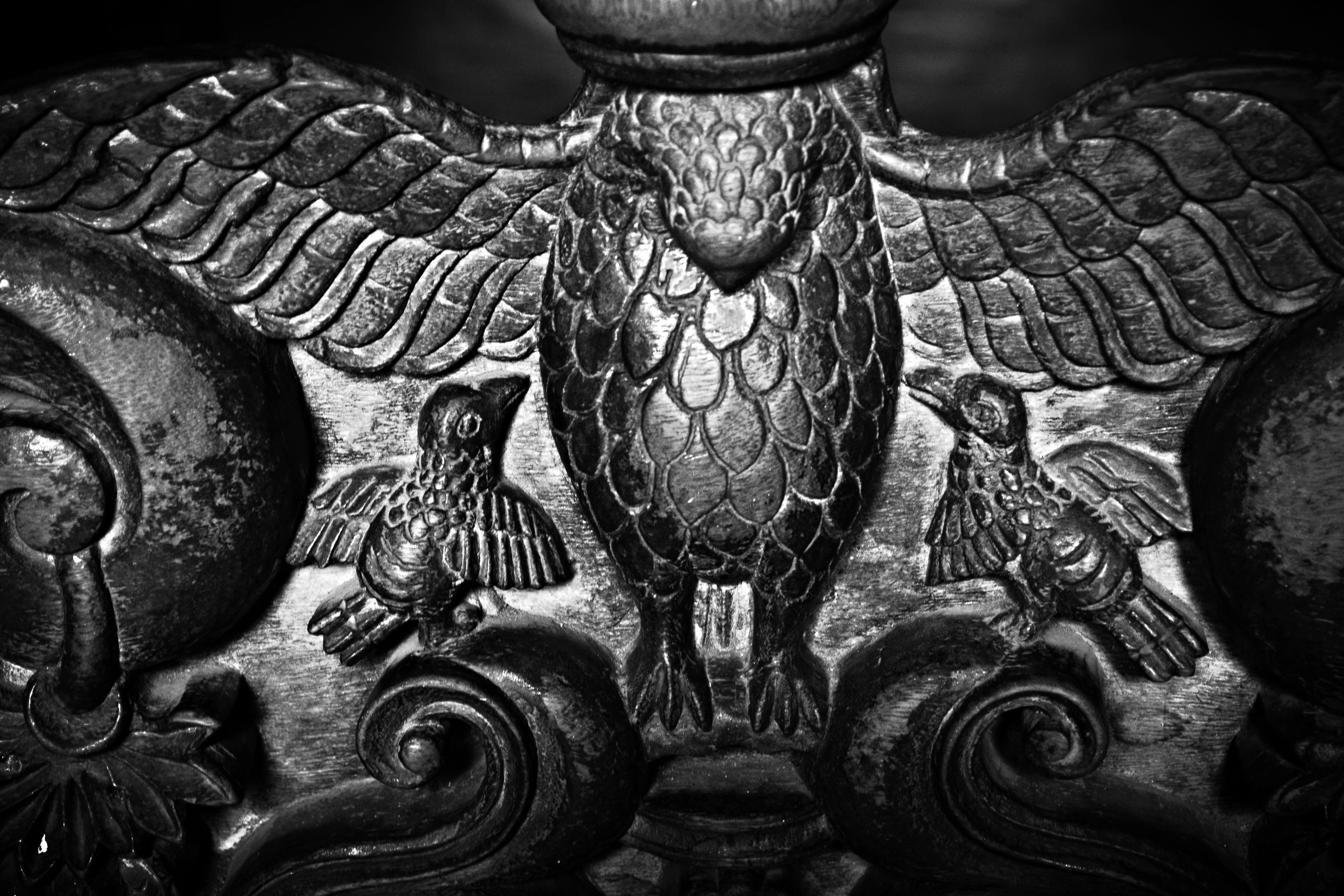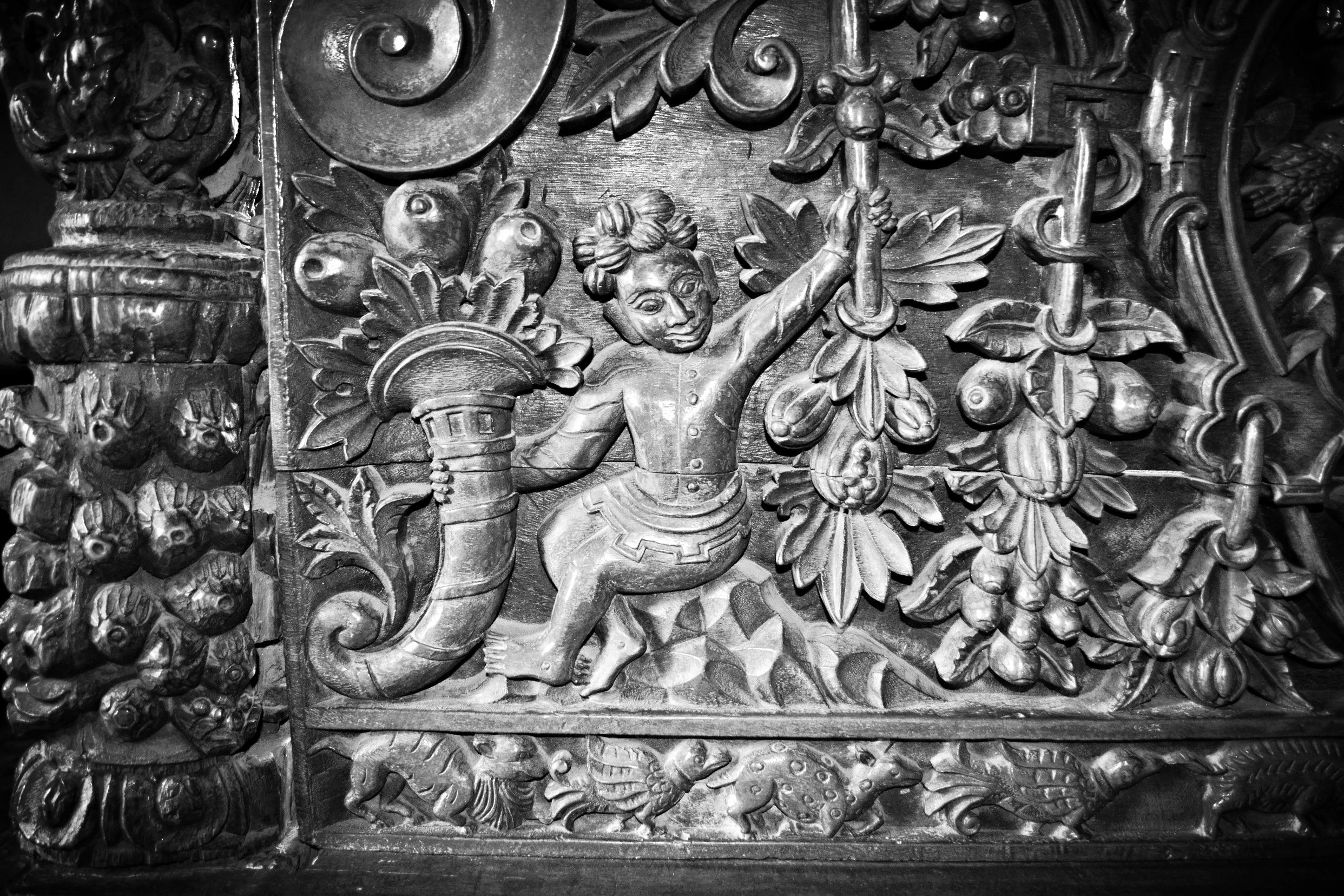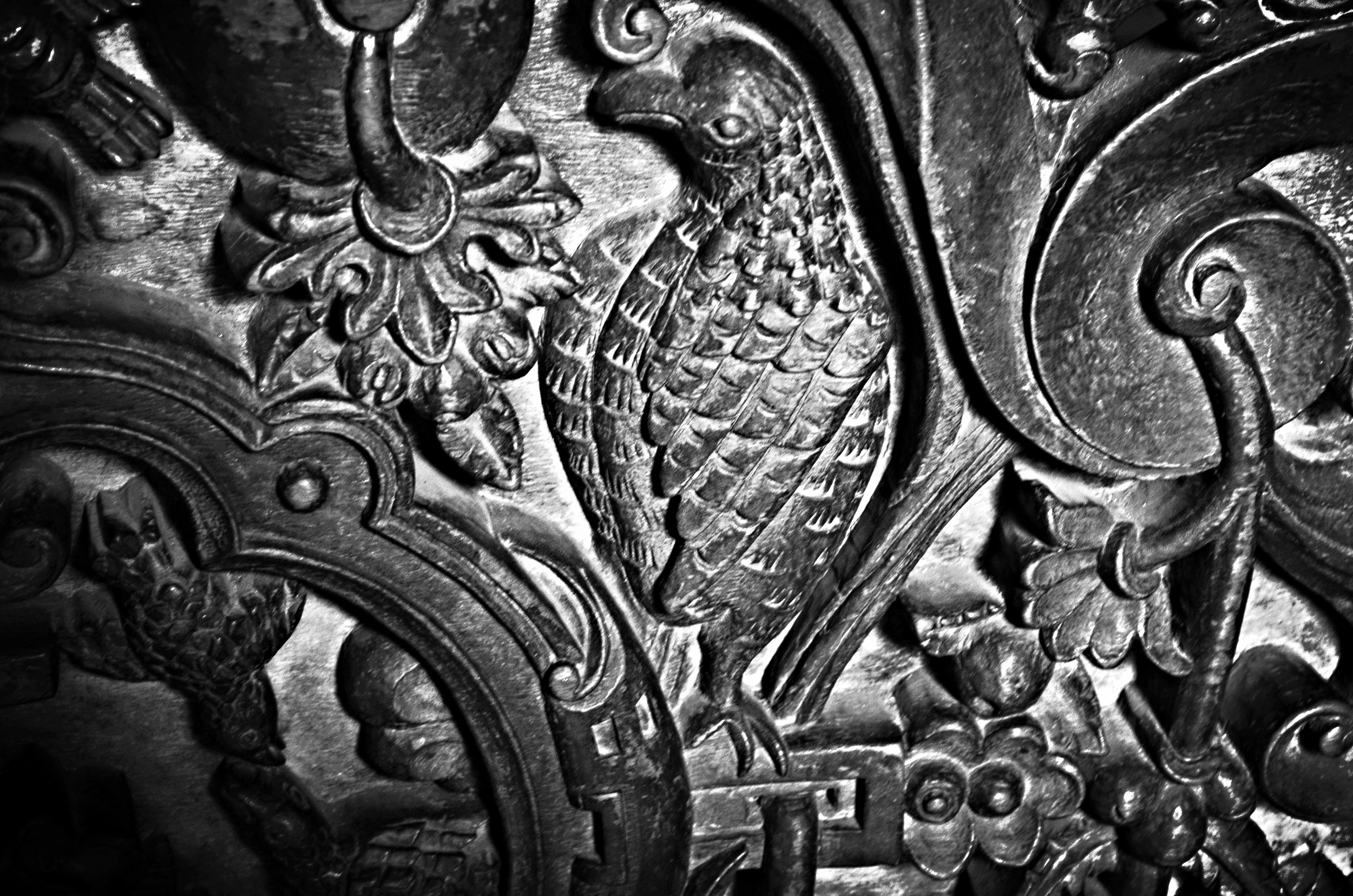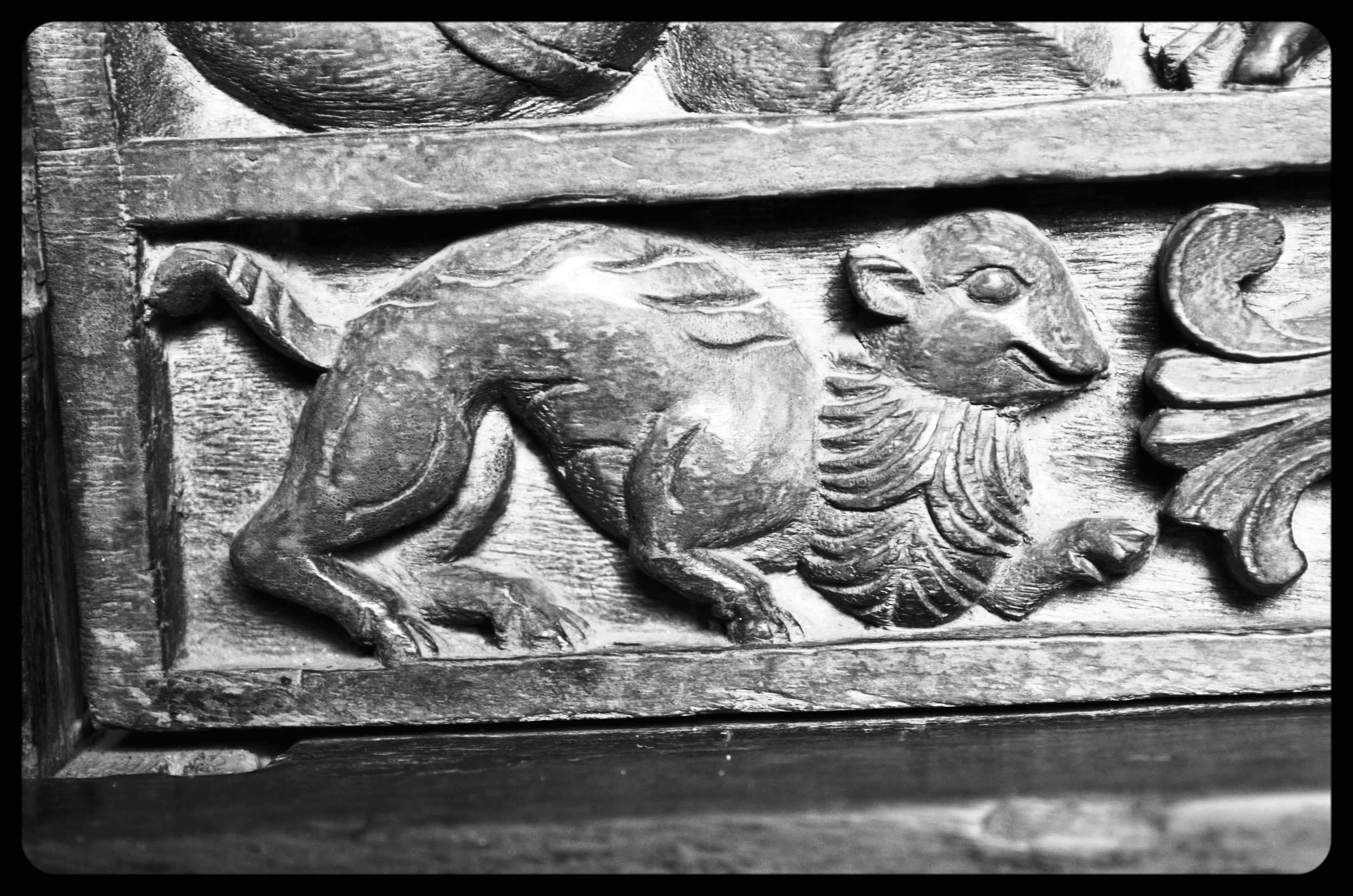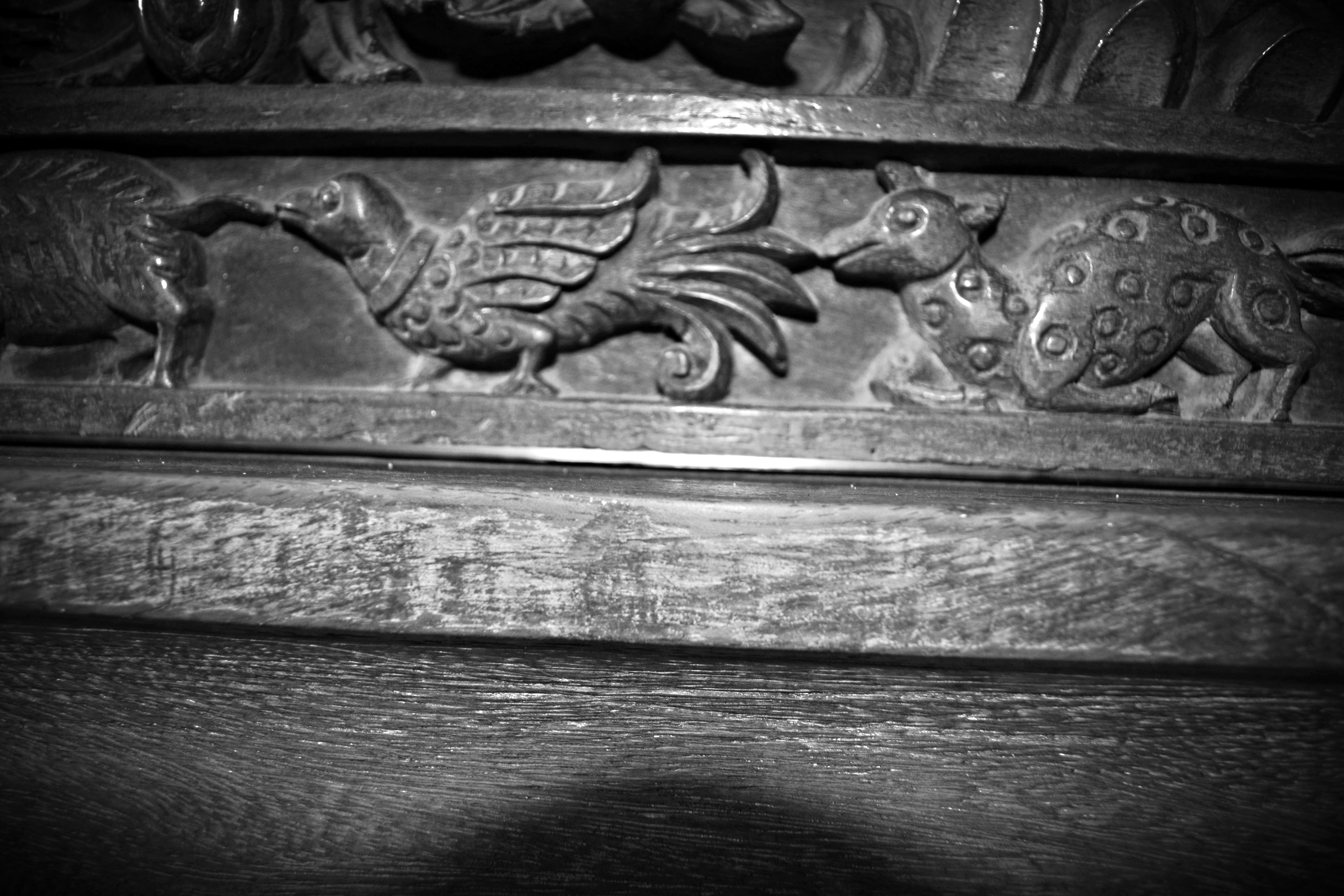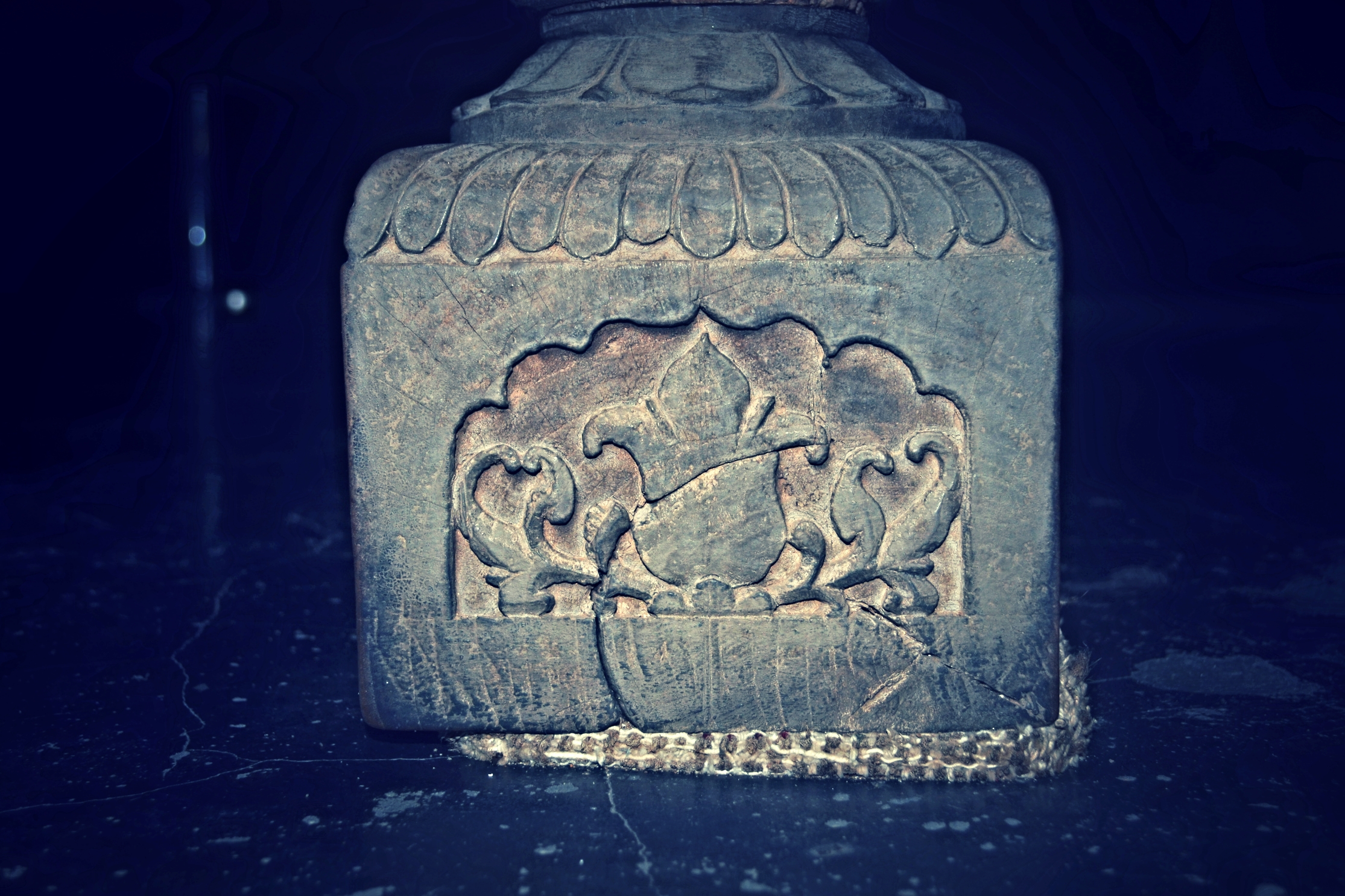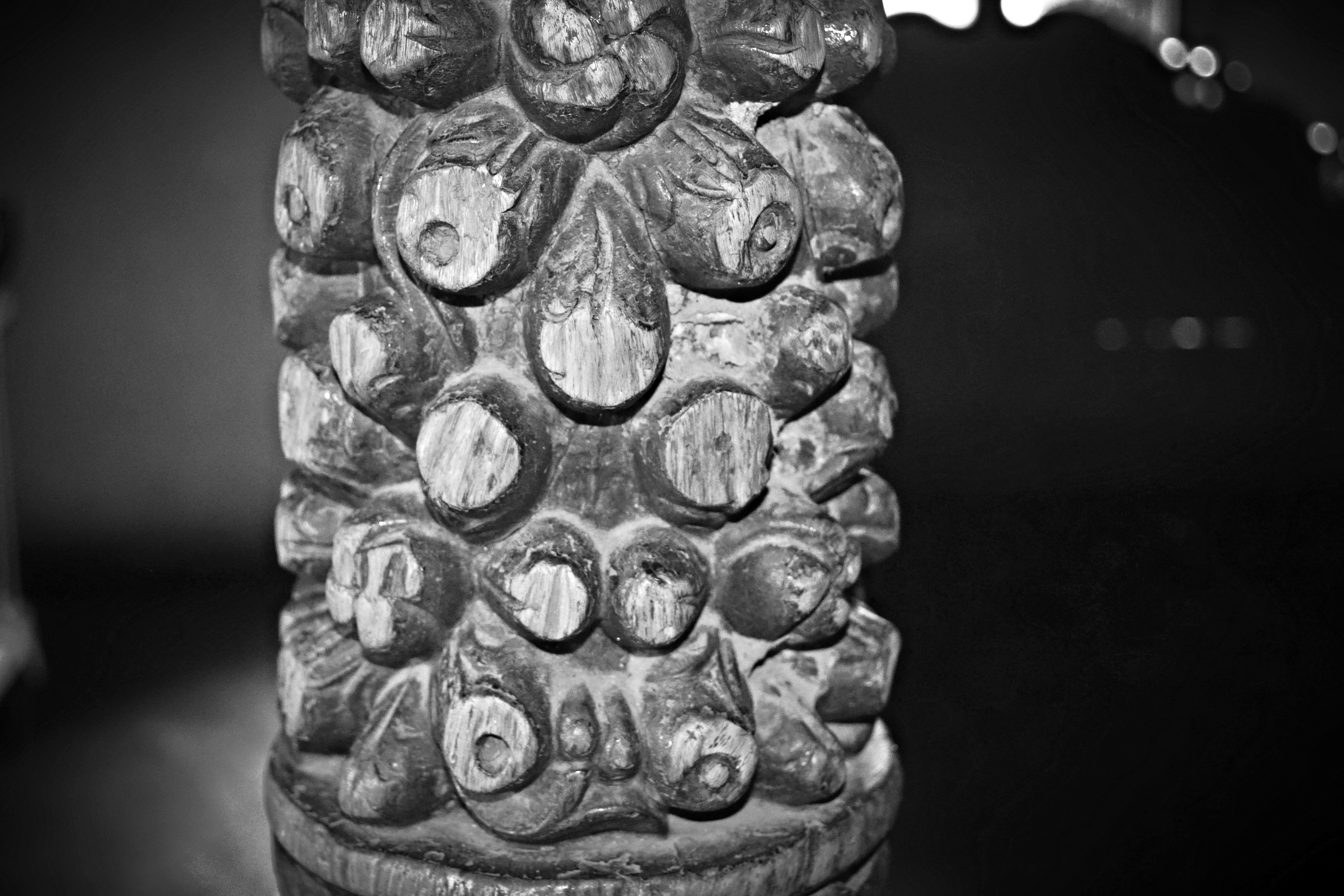The processional staff-cross displayed on the headboard may help in identifying the center of production of the custom-made Padmanabhapuram bed. The bed was a gift to Maharaja Marthanda Varma, the ruler of Travancore, from either Portuguese or Dutch traders. (Thus far, no one has been able to concretely attribute the provenance of the bed to one or the other, and confusion reigns regarding its date of manufacture. More on dating woes here.)
My initial guess was that the bed was not produced in Travancore but brought from Fort Kochi (Cochin), the stronghold of Europeans on the Malabar Coast. (Fort Kochi was a safe haven for the Portuguese, and after they were ousted in 1663, it remained under the Dutch until 1795, when Holland ceded all its dominions in India to the British following William V's Kew Letters.) After all, why would the Europeans gift a powerful potentate of the region a bed, medicinal as it may be, from his own kingdom?? My hunch, I found, was supported in the essays of an early-twentieth-century Danish curator of Indian furniture, Wilhelm Slomann. His essays in Burlington Magazine from the 1920s mentioned, in passing, that an active trade center producing export-furniture existed in "Malabar". (I take this to mean Cochin because if it was the southern Malabar coast, Slomann would have addressed it as Travancore; Malabar in twentieth-century meant the British-controlled portions of Kerala to the north of Travancore.) Indeed, a bed that he claims as made in Southern India, looks, at least in basic organizational framework of its design, similar to the Padmanabhapuram bed.
My hunch has turned into a tentative argument with the analysis of the staff-cross. If you take a close look, you will see that the cross has two perpendicular prongs on top. The shorter prong above the longer one, connects the two upper ends of the stylized ficus-leaf frame that surrounds the serpent-wound cross. With no archival documents uncovered thus far (I hope to get hold of Dutch Malabar documents this Fall) it is hard to be absolutely sure, but I contend that the cross resembles the famous Coonan Cross of Mattancheri in Fort Kochi.
Coonan Cross holds special significance for the Malayalee Christians of central Kerala. It was in front of the cross of Our Lady of Life Church, in 1653, that the St. Thomas Christians of Kerala broke into two factions, one who accepted Latin rites brought in by Portuguese Jesuits, and the other, called Malankara Christians, returning to their older Syriac faith. For Malankara Christians, Coonan Cross where the oath was taken held special significance, and with time, it became a place of pilgrimage for local Christians from central Kerala.






